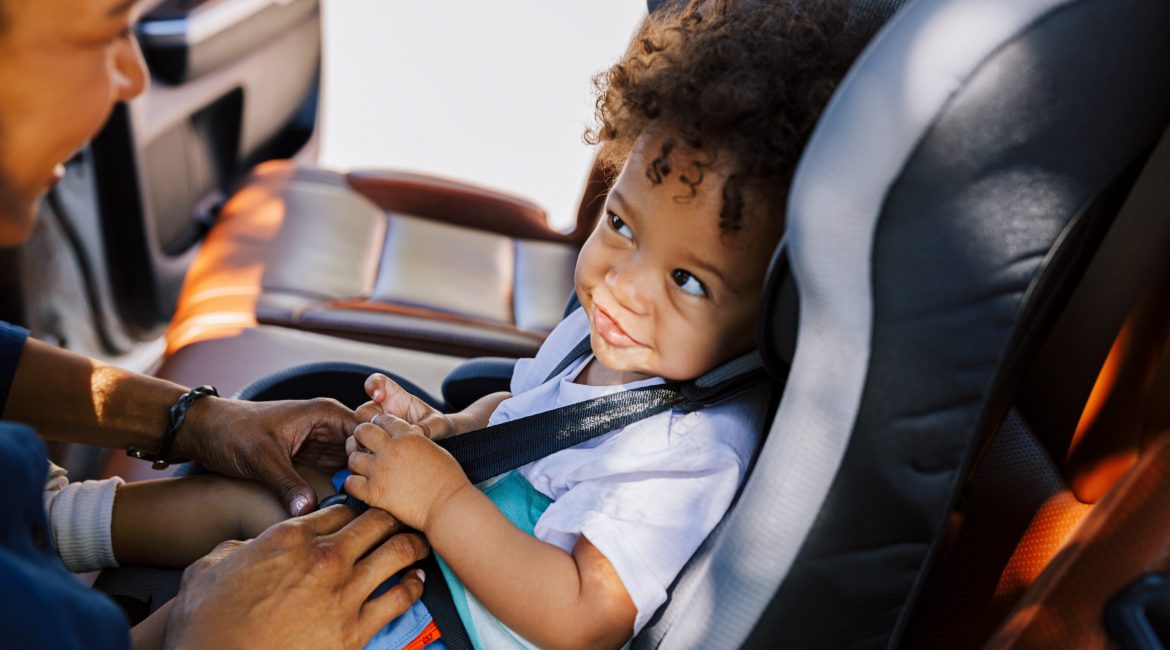Did you know that, as a driver, you are legally responsible for any child not wearing a seatbelt in your car who is under the age of 14? Here’s what you need to know about child car seat safety.
Driving with children in the car is a big responsibility. Our roads are dangerous enough as it is, and having young ones with you can be a pretty daunting experience if something goes wrong.
To ensure safer travelling with your children in the car, have a look at some of the guidelines on child car seat safety below.
Tell me more about the laws of child car seat safety in South Africa?
A recent survey found that as many as 93% of children under the age of 12 who are passengers in cars are NOT strapped into the car seats they need in order to survive a car crash.
Those results are shocking considering Africa has only 2% of the world’s cars but 20% of road deaths. It is illegal to drive with a child under the age of 3 who is not strapped into an approved safety car seat. Every single person in your car (including you), in both the front and backseats, HAVE to be strapped into a seatbelt or the appropriate kid’s car seat.
What if my child sits on my lap while driving?
Your child should ALWAYS have their own seat and be strapped in with a seatbelt or into their car seat. They should NEVER sit on your lap. The reason for this is that if you are involved in a car accident or if the car has to come to an emergency stop, your body takes on the weight of speed the car is travelling at, multiplied by your own body weight.
This means that if your child weighs 10kgs and your car is moving at 60km/h, then your child will take on the weight of 600kg – which is a lot of weight! It is also IMPOSSIBLE for you to physically hold your child in the event of a crash or stop because of this.
What if I strap my child in while they are sitting on my lap?
If you use a seatbelt that straps in both you and your child, your child may be crushed to death between you and the seatbelt. This is because the force is the same as 30 adults who each weigh 50kgs, standing on your child.
The danger of sitting on laps
Because the weight of your child is dramatically increased in the event of a crash, their small size allows them to freely move inside the car. This means they can easily be thrown out of the car windows or windscreen, 75% of children who are thrown out of cars from the force of a crash do not survive the event. And those who do survive are disabled.
Read more: 6 Car Dashboard Warning Lights You Should Never Ignore
These facts are scary and terrifying to read, but we’re not just trying to frighten you unnecessarily. It’s important for all parents to know the risks associated with not properly securing their small children into a car seat. Even if your car is only travelling at 40km/h and your child suffers from a blow to his head, this can also be fatal.
Car seats for small children in cars
There are different seats designed for the different stages in your child’s development. Your child will need 3 different car seats in their lifetime.
Stage 1 car seats – for infants
Your child will need to be fastened and secured into an infant seat that is rear facing until they weigh at least 13kgs or are 75cm in height. Rear-facing car seats help to spread the force of a crash over the larger area of the back of the infant, instead of the force being taken on by an underdeveloped neck.
It’s a good idea to ensure your child is not wearing a bulky jacket or blanket when strapped in as this can cause them to come loose in the event of a crash. Rather place the blanket on top of them after they are strapped in.
Stage 2 car seats – for toddlers
Toddlers and pre-schoolers need to be secured into a rear-facing seat until they are at least 18kgs in weight or 105cm in height. This is usually between 3 and 4 years old.
Stage 3 car seats – for primary schoolers
Once your child is older, they can be placed in a front-facing seat. This booster safety seat will guide the position of the seatbelt over their little body. Your child should not be allowed to sit in the front of the car until they are 13 years old.
Have a look at this informative website to find out everything you need to know about child car seat safety.
Your Insurance Family,
Oneplan




